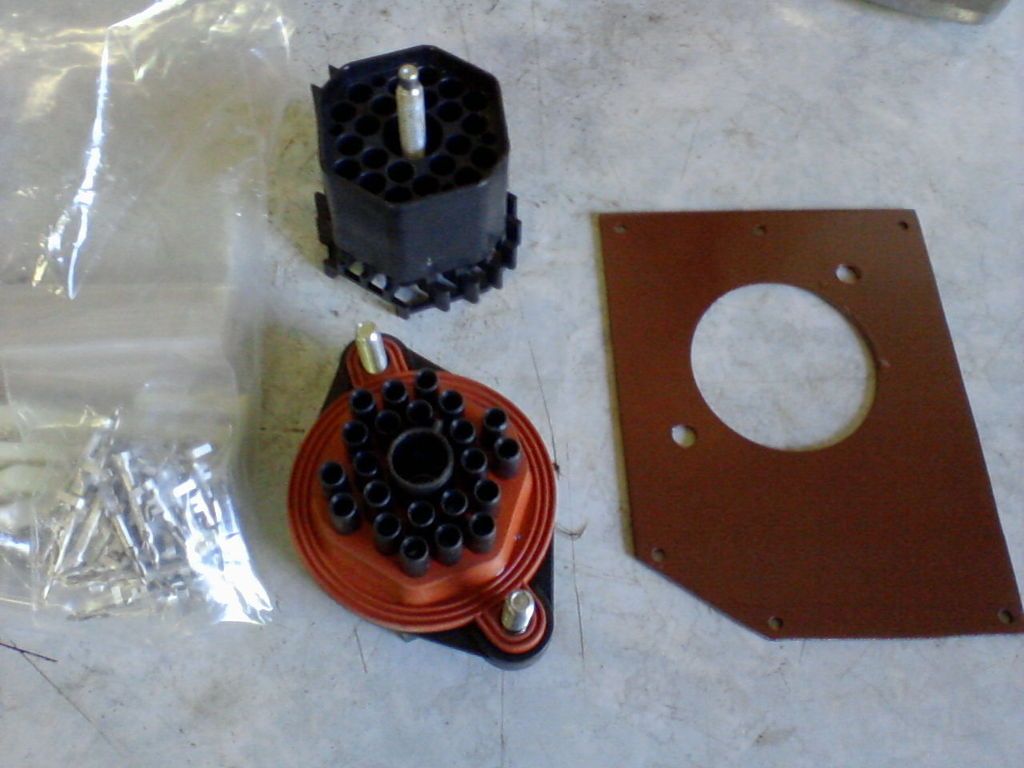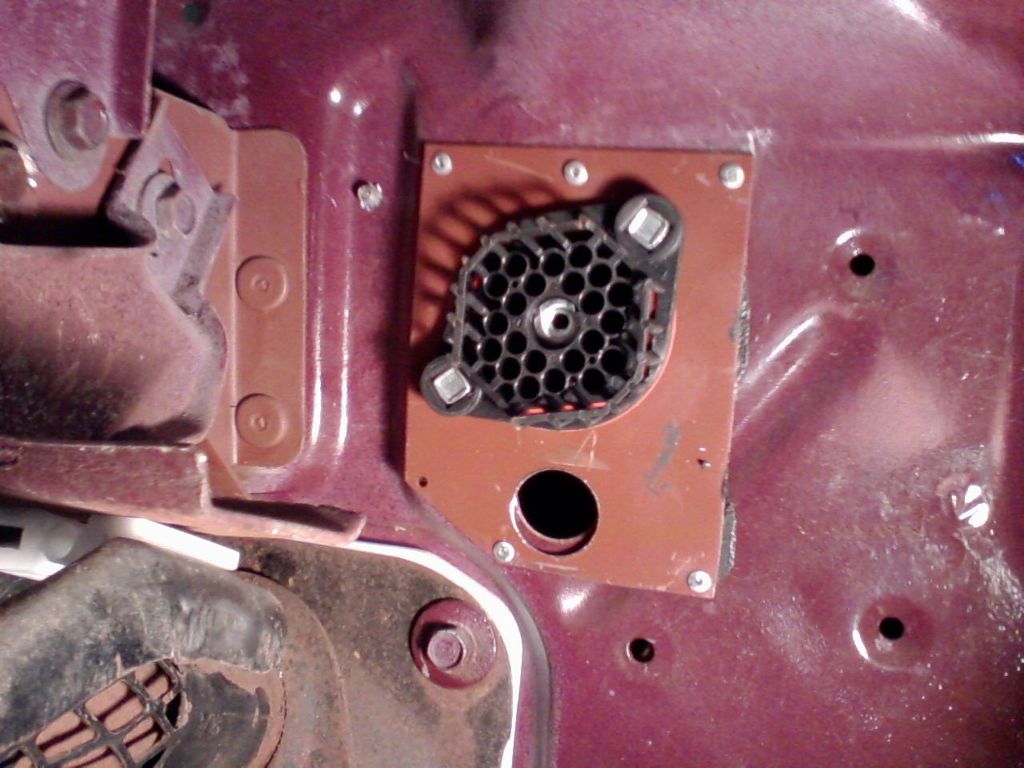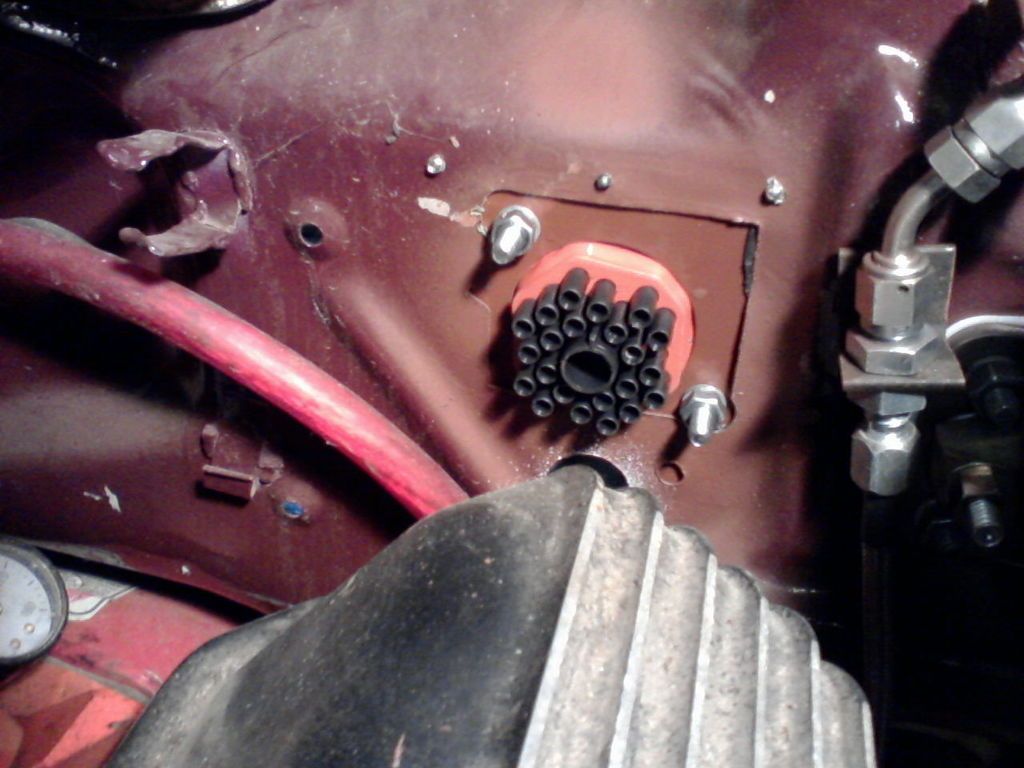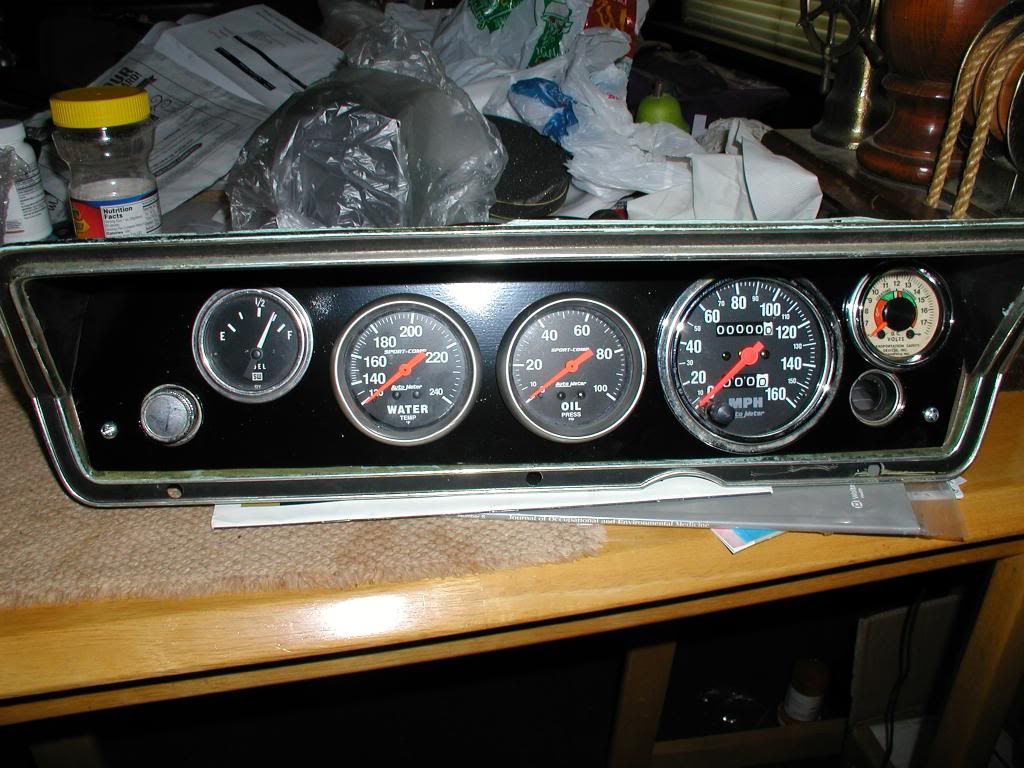DrCharles
Well-Known Member
I bought my car as a rolling shell, completely stripped including every inch of wire. So I'm wiring it from scratch. This makes a good bulkhead connector and it just fits across the existing hole with a little grinding to clear one of the mounting nuts.
http://www.amazon.com/dp/B005O0V5JQ/?tag=fabo03-20
I made a 16 ga. steel plate to cover the existing hole and was about to rivet it in place when I remembered what that other (1") hole was for... the gas pedal cable! So I made another hole in my plate, then secured it to the firewall with a bead of RTV around the edges.



http://www.amazon.com/dp/B005O0V5JQ/?tag=fabo03-20
I made a 16 ga. steel plate to cover the existing hole and was about to rivet it in place when I remembered what that other (1") hole was for... the gas pedal cable! So I made another hole in my plate, then secured it to the firewall with a bead of RTV around the edges.




















